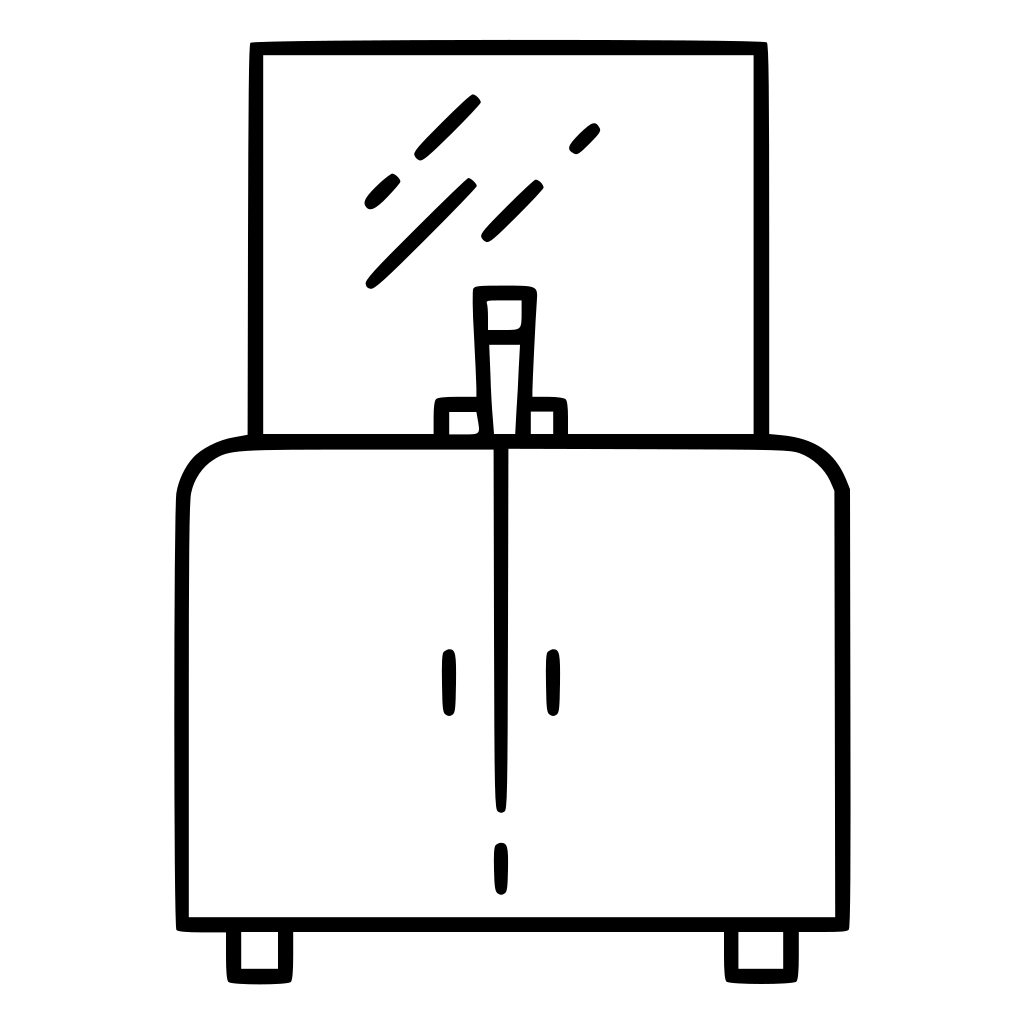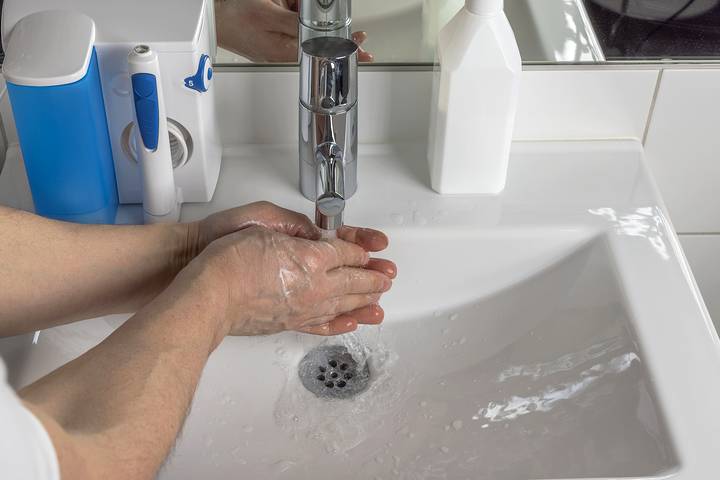Bathroom Sink Requirements
When it comes to designing or renovating a bathroom, one of the most important considerations is the sink. Not only is it a functional necessity, but it also plays a significant role in the overall aesthetic of the space. But do you know the requirements for a bathroom sink? In this article, we will break down the regulations and codes for bathroom sinks, as well as the different requirements for residential and commercial bathrooms.
Bathroom Sink Regulations
Before installing a sink in your bathroom, it is crucial to understand the regulations set by your local building authority. These regulations ensure that the sink meets safety and sanitation standards and that it is installed correctly. Failure to comply with these regulations can result in costly fines or even delays in your project.
One of the most common regulations for bathroom sinks is the minimum distance between the sink and other fixtures. According to most building codes, the sink must be at least 15 inches from the centerline of the toilet and at least 4 inches from the edge of the bathtub. This distance ensures that there is enough space for users to comfortably use these fixtures without obstruction.
Sink Requirements for Bathrooms
When it comes to bathroom sinks, there are several requirements that must be met for both residential and commercial bathrooms. The first requirement is the type of sink that is installed. According to most building codes, the sink must be made of a non-absorbent material, such as porcelain or stainless steel, to prevent the growth of bacteria and mold.
Another requirement is the number of sinks required in a bathroom. For residential bathrooms, a single sink is usually sufficient. However, for commercial bathrooms, the number of sinks required will depend on the number of users the bathroom is designed to serve. For example, a public restroom may be required to have multiple sinks to accommodate more users.
Bathroom Sink Code
The bathroom sink code refers to the set of rules and regulations that must be followed when installing a sink in a bathroom. These codes vary by location, so it is essential to check with your local building authority before beginning any construction or renovation project.
In addition to the minimum distance requirements mentioned earlier, the bathroom sink code also covers the installation height and depth of the sink. According to most codes, the sink should be installed no more than 34 inches from the floor and should have a depth of at least 17 inches.
Sink Requirements for Residential Bathrooms
In addition to following the general bathroom sink requirements, there are also specific regulations for residential bathrooms. These requirements are typically more relaxed than those for commercial bathrooms, as residential bathrooms are for private use and do not have the same volume of users.
One requirement for residential bathrooms is the number of sinks in a master bathroom. In most cases, a master bathroom is required to have two sinks to accommodate two users comfortably. However, for smaller bathrooms, a single sink may be sufficient.
Bathroom Sink Plumbing Requirements
When installing a bathroom sink, it is essential to follow the plumbing requirements. This includes ensuring that the sink is connected to the water supply and wastewater systems correctly. The plumbing must also be installed in a way that prevents leaks and promotes proper drainage.
In addition to the plumbing, there are also requirements for the sink's trap and vent. The trap is a curved pipe that prevents sewer gases from entering the bathroom, while the vent allows for proper air circulation in the drain system. These requirements ensure that the sink functions properly and meets sanitation standards.
Sink Requirements for Commercial Bathrooms
Commercial bathrooms have stricter requirements than residential bathrooms due to their higher volume of users. In addition to the number of sinks required, commercial bathrooms must also have larger sinks to accommodate for handwashing and any necessary ADA accommodations.
One requirement for commercial bathroom sinks is the type of faucet used. According to most building codes, commercial bathroom sinks must have touchless faucets to promote better hygiene and prevent the spread of germs. These faucets are activated by a sensor, reducing the need for users to touch the sink.
Bathroom Sink Size Requirements
The size of a bathroom sink is also regulated to ensure that it is functional and accessible for users. The standard size for a bathroom sink is 22 inches wide by 30 inches long. However, the size may vary depending on the type of sink and the location of the bathroom. For example, a powder room may require a smaller sink, while a master bathroom may have a larger sink with more counter space.
Sink Requirements for Handicapped Bathrooms
For bathrooms that are designed to accommodate individuals with disabilities, there are additional sink requirements that must be met. These include a lower installation height, wider clearance around the sink, and a higher faucet to allow for wheelchair access. These requirements ensure that the sink is accessible and functional for all users.
Bathroom Sink Venting Requirements
Venting is an essential part of a bathroom sink's plumbing system, and it is also regulated to ensure proper function and safety. The vent allows for the release of sewer gases and prevents the buildup of pressure in the drain system. It also promotes proper drainage and prevents clogs.
According to most building codes, there should be a vent within 5 feet of the sink drain. The vent should also be installed at least 6 inches above the sink's flood level rim, which is the height at which water will overflow from the sink.
The Importance of Having a Sink in Your Bathroom
:max_bytes(150000):strip_icc()/bathroom-space-design-1821325_final-08ffd0dca30b4e038cf7f1d7ebe0745f.png)
Why a Bathroom Sink is a Necessity
The Functionality of a Bathroom Sink
 Having a sink in the bathroom is crucial for maintaining proper hygiene and cleanliness.
It is a necessary component for handwashing, which is the most effective way to prevent the spread of germs and bacteria.
This is especially important in a household with multiple members. Without a sink, individuals would have to go to the kitchen or another room to wash their hands, which can be inconvenient and unhygienic.
Moreover, a bathroom sink is also essential for maintaining oral hygiene.
Brushing teeth and rinsing the mouth after meals is a daily routine that requires a sink and running water.
Without it, individuals would have to use cups or bowls, which are not as sanitary and can cause a mess.
Having a sink in the bathroom is crucial for maintaining proper hygiene and cleanliness.
It is a necessary component for handwashing, which is the most effective way to prevent the spread of germs and bacteria.
This is especially important in a household with multiple members. Without a sink, individuals would have to go to the kitchen or another room to wash their hands, which can be inconvenient and unhygienic.
Moreover, a bathroom sink is also essential for maintaining oral hygiene.
Brushing teeth and rinsing the mouth after meals is a daily routine that requires a sink and running water.
Without it, individuals would have to use cups or bowls, which are not as sanitary and can cause a mess.
The Aesthetic Appeal of a Bathroom Sink
 Aside from its functional purposes, a bathroom sink also adds to the overall design and aesthetic of the space. With a variety of styles, materials, and colors to choose from,
a sink can serve as a statement piece or complement the overall theme of the bathroom.
It can also provide additional storage space for toiletries and other bathroom essentials.
Aside from its functional purposes, a bathroom sink also adds to the overall design and aesthetic of the space. With a variety of styles, materials, and colors to choose from,
a sink can serve as a statement piece or complement the overall theme of the bathroom.
It can also provide additional storage space for toiletries and other bathroom essentials.
In Conclusion
 In conclusion, a bathroom sink is not just a desired feature, but a necessary one.
It plays a crucial role in maintaining proper hygiene and adds to the overall functionality and aesthetics of a bathroom.
Therefore, when designing a bathroom, it is important to consider the addition of a sink to ensure a well-designed and functional space.
In conclusion, a bathroom sink is not just a desired feature, but a necessary one.
It plays a crucial role in maintaining proper hygiene and adds to the overall functionality and aesthetics of a bathroom.
Therefore, when designing a bathroom, it is important to consider the addition of a sink to ensure a well-designed and functional space.












































































:max_bytes(150000):strip_icc()/venting-sink-diagram-f8f9759a-1047c08369d24101b00c8340ba048950.jpg)















